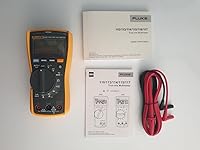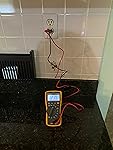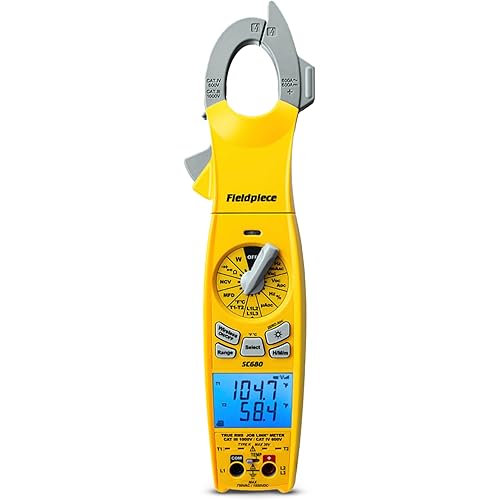Fluke 117 Digital Multimeter, Non-Contact AC Voltage Detection, Measures Resistance/Continuity/Frequency/Capacitance/Min Max Average, Automatic AC/DC Voltage Selection, Low Impedance Mode







Buy Now, Pay Later
- – 6-month term
- – No impact on credit
- – Instant approval decision
- – Secure and straightforward checkout
Ready to go? Add this product to your cart and select a plan during checkout.
Payment plans are offered through our trusted finance partners Klarna, Affirm, Afterpay, Apple Pay, and PayTomorrow. No-credit-needed leasing options through Acima may also be available at checkout.
Learn more about financing & leasing here.
Selected Option
FREE refund/replacement until Jan 31, 2026 Learn more
To qualify for a full refund, items must be returned in their original, unused condition. If an item is returned in a used, damaged, or materially different state, you may be granted a partial refund.
To initiate a return, please visit our Returns Center.
View our full returns policy here.
Recently Viewed
Pattern Name: Multimeter
Features
- VoltAlert technology for non-contact voltage detection
- AutoVolt automatic AC/DC voltage selection. DC millivolts - Range : 600.0 mV, Resolution : 0.1 mV
- Low input impedance: helps prevent false readings due to ghost voltage
- Large white LED backlight to work in poorly lit areas
- True RMS for accurate measurements on non-linear loads. Operating temperature: -10C to +50C. Battery life: 400 hours typical, without backlight
Description
With its integrated non-contact voltage detection and the AutoV/LoZ function preventing false readings caused by ghost voltage, the Fluke 117 Electrician's Multimeter is the ideal multimeter for electricians. In fact, users around the world have said their 117 is an investment in accuracy. The Fluke 117 provides Min/Max/Average readings, measuring frequency and capacitance. With its easy-to-use design, the Fluke 117 will save you time, allowing you to move from job to job with ease. From the Manufacturer Compact true-rms meter for commercial applications. The Fluke 117 is the ideal meter for demanding settings like commercial buildings, hospitals and schools. The 117 includes integrated non-contact-voltage detection to help get the job done faster.
Brand: Fluke
Power Source: Battery Powered
Style: TRUE RMS MULTIMETER
Color: yellow
Item Weight: 550 Grams
Brand: Fluke
Power Source: Battery Powered
Style: TRUE RMS MULTIMETER
Color: yellow
Item Weight: 550 Grams
Item dimensions L x W x H: 6.67 x 3.31 x 1.82 inches
Lower Temperature Rating: 10 Degrees Celsius
Specification Met: Iec
Upper Temperature Rating: 50 Degrees Celsius
Measurement Type: Multimeter
UPC: 646635094931 785971736287 653445857540 795622924307 042111959907 959693242054 642008667146 609311394411 195112030639 095969324205 758353252026 768724936035 768724933522 095969344852 642008168063 069060076370
Manufacturer: Fluke Corporation
Global Trade Identification Number: 05, 52, 31, 87
Part Number: FLUKE 117
Item Weight: 1.21 pounds
Product Dimensions: 6.67 x 3.31 x 1.82 inches
Item model number: FLUKE 117
Batteries: 2 AA batteries required. (included)
Is Discontinued By Manufacturer: No
Size: 1) Standard
Material: Plastic
Pattern: Multimeter
Voltage: 9 Volts
Item Package Quantity: 1
Number Of Pieces: 1
Sound Level: 1 Decibels
Measurement Accuracy: +/-0.5%
Usage: Professional
Included Components: Fluke 117 Digital Multimeter
Batteries Included?: Yes
Batteries Required?: Yes
Battery Cell Type: Alkaline
Warranty Description: 3 years
National Stock Number: 6625-01-363-5825
Date First Available: March 7, 2007
Frequently asked questions
To initiate a return, please visit our Returns Center.
View our full returns policy here.
- Klarna Financing
- Affirm Pay in 4
- Affirm Financing
- Afterpay Financing
- PayTomorrow Financing
- Financing through Apple Pay
Learn more about financing & leasing here.
Similar Products
Top Amazon Reviews































